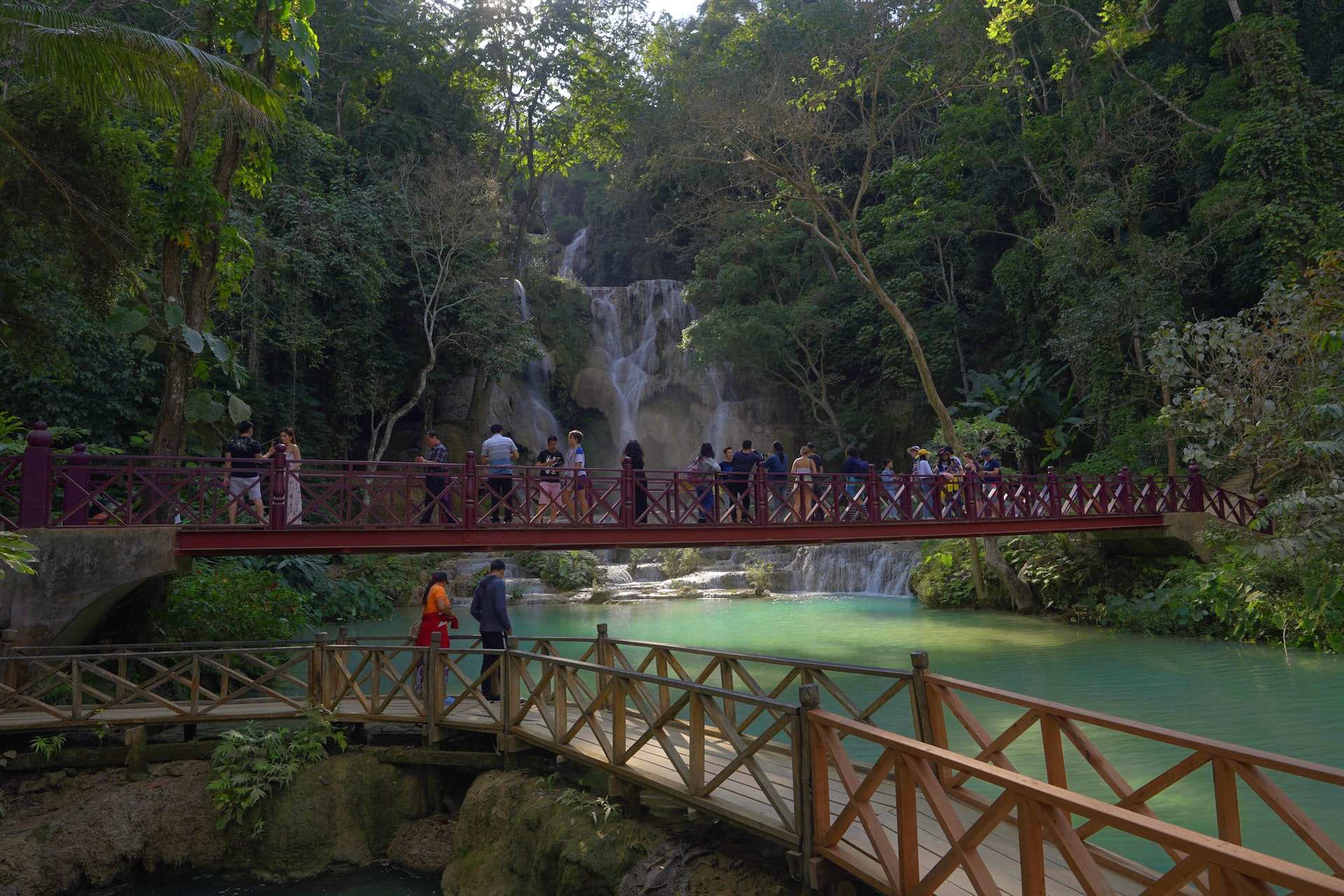Luang Namtha museums are a must-see for any history buff or art enthusiast visiting the area. With a rich cultural heritage and an abundance of artifacts and artwork on display, these museums offer a glimpse into the past and a deeper understanding of the local communities. In this article, we will take a closer look at the most popular museums in Luang Namtha, exploring their exhibits, special exhibitions, history and background, and availability of guided tours.
1. Luang Namtha Cultural Center
The Luang Namtha Cultural Center is a must-visit for anyone interested in the cultural heritage of Luang Namtha. The museum features exhibits on the history and customs of the various ethnic groups that inhabit the region, including the Akha, Hmong, and Lanten people. Visitors can see traditional clothing, jewelry, and household items, as well as learn about the different religious practices and beliefs of these groups.
Exhibits:
The exhibits of the Luang Namtha Cultural Center focus on the traditional customs and cultural practices of the local ethnic groups. Visitors can see traditional clothing, jewelry, and household items, as well as learn about the different religious practices and beliefs of these groups. The museum also has a collection of ancient artifacts, including pottery and tools, that provide insight into the daily life of the people who lived in this region many years ago.
Special Exhibitions:
The Luang Namtha Cultural Center occasionally hosts special exhibitions on specific themes, such as the traditional festivals and ceremonies of the local ethnic groups. These exhibitions provide a deeper understanding of the customs and traditions of the local communities and are a great way to learn more about the culture of Luang Namtha.
History and Background:
The Luang Namtha Cultural Center was established in 2005 to promote the culture and heritage of the local ethnic groups. The museum is located in the heart of Luang Namtha town, making it easily accessible to visitors.
Availability of Guided Tours:
Guided tours of the Luang Namtha Cultural Center are available to visitors. These tours are led by knowledgeable guides who provide insight into the exhibits and help visitors gain a deeper understanding of the culture and heritage of the local ethnic groups.
2. Luang Namtha Museum
The Luang Namtha Museum is located in the heart of the city, and it is dedicated to preserving the history and culture of the region. The museum features exhibits on the history of Luang Namtha, including the ancient and modern history of the city, and the various ethnic groups that have inhabited the region over the centuries.
Exhibits:
The exhibits of the Luang Namtha Museum showcase the history of Luang Namtha and the surrounding area. Visitors can see ancient artifacts, such as pottery and tools, as well as learn about the different ethnic groups that have lived in the region over the years. The museum also features exhibits on the modern history of Luang Namtha, including the city’s growth and development.
Special Exhibitions:
The Luang Namtha Museum occasionally hosts special exhibitions on specific themes, such as the history of a particular ethnic group or the impact of a particular event on the region’s history. These exhibitions provide a deeper understanding of the history of Luang Namtha and are a great way to learn more about the city and its people.
History and Background:
The Luang Namtha Museum was established in 2007 as a way to preserve the history and culture of the region. The museum is located in the heart of the city and is easily accessible to visitors. It is operated by the local government and is a popular destination for both tourists and locals.
Availability of Guided Tours:
Guided tours of the Luang Namtha Museum are available to visitors. These tours are led by knowledgeable guides who provide insight into the exhibits and help visitors gain a deeper understanding of the history and culture of the region.
3. Luang Namtha Provincial Museum
The Luang Namtha Provincial Museum is dedicated to the preservation of the history and culture of the province of Luang Namtha. The museum features exhibits on the ancient and modern history of the province, as well as the various ethnic groups that have inhabited the region over the centuries.
Exhibits:
The exhibits of the Luang Namtha Provincial Museum showcase the history of the province and the surrounding area. Visitors can see ancient artifacts, such as pottery and tools, as well as learn about the different ethnic groups that have lived in the region over the years. The museum also features exhibits on the modern history of the province, including its growth and development.
Special Exhibitions:
The Luang Namtha Provincial Museum occasionally hosts special exhibitions on specific themes, such as the history of a particular ethnic group or the impact of a particular event on the region’s history. These exhibitions provide a deeper understanding of the history of the province and are a great way to learn more about the area and its people.
History and Background:
The Luang Namtha Provincial Museum was established in 2010 as a way to preserve the history and culture of the province. The museum is located in the heart of the city and is easily accessible to visitors. It is operated by the local government and is a popular destination for both tourists and locals.
Availability of Guided Tours:
Guided tours of the Luang Namtha Provincial Museum are available to visitors. These tours are led by knowledgeable guides who provide insight into the exhibits and help visitors gain a deeper understanding of the history and culture of the province.
In conclusion, Luang Namtha museums offer visitors a unique opportunity to learn about the history, culture, and heritage of the region. With a variety of exhibits, special exhibitions, and guided tours, these museums are a must-see for anyone visiting Luang Namtha. Whether you’re interested in the ancient history of the area, or the modern customs of the local ethnic groups, these museums have something for everyone to enjoy.



